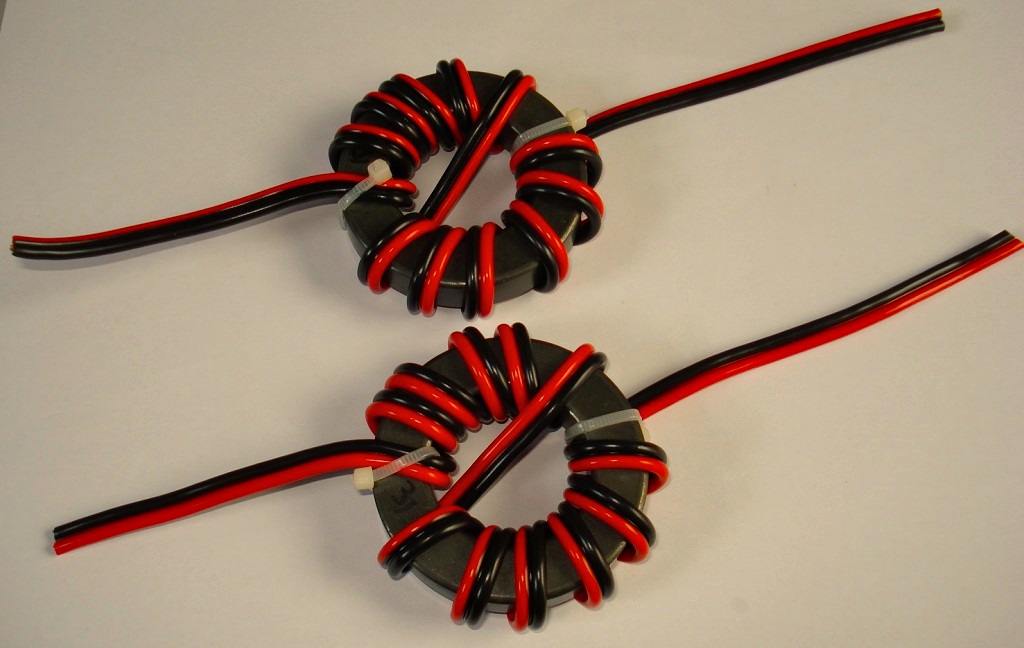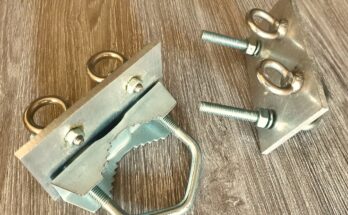
It’s often said that you must use a 4:1 Balun on your G5RV or where ladder-line meets coaxial cable.
I often hear this topic discussed on the airwaves and the popular offering is that “you reduce the 300 or 450-ohms to nearer 50-ohms”. This is a fallacy, because going by that logic you could just replace the balanced feeder and use 50-ohm coax, right?
The truth is that without some measurements of your ladder-line and wire lengths, you just won’t know what the aerial (be it a Doublet or G5RV) is doing at a given frequency. The late G3TXQ wrote extensively about this and you can see a copy of that article here.
If you have a manual ATU, it may already have its own internal 4:1 Balun – and with this convenience why should anyone want to build an external one?
The answer is because there are times when this arrangement is less than ideal:
- Performance: The amount of turns and the type of core used will determine how good a job the balun does. The wrong core and/or insufficient turns can make things worse.
- Rating: The type of cores used in the small/medium-price ATUs are typically of the 1.4″ diameter and, conservatively, good for about 150-watts – assuming an ideal match. As our tuner is there to deal with a less-than-ideal match the power handling may drop considerably!
- Right Tool for the Job: 4:1 Baluns, especially those found inside ATUs and those placed at the feedpoint of an OCFD/Windom* are of the voltage type which do not perform any choking duties – bad news if there is a significant length of coax between it and the radio.
- Shack Plumbing: You may not be able to bring balanced feeder into the Shack so have to rely on a small length of coax through the wall
*Windom: If you are building an OCFD that requires a portion of the coax to radiate before an additional Choke/Isolator is inserted on the cable, this 4:1 is NOT the Balun type to use at the feedpoint. You need a Voltage Balun.
Baluns are relatively simple, but can be tricky to wind due to the physical skill required to handle the coax whilst wrestling it around the core. The windings comprise of 12 turns on 2x FT240-31 ferrite cores – In order for each end of the cable to be opposite to each other, there is a crossover point – there is little performance change when doing this and you’ll see many examples of Baluns that have this trait. It’s simply a way of getting the ends of the wire to where you want them – useful when you’re putting it into a box as wire-lengths can be critical.
On their own, these cores could function as a garden-variety 1:1 Current Balun/Choke (although I prefer to wind those with RG58, RG316 or RG142) – but I’m going to pair them up and wire them in a special way…

Notice how they are wired: 200-ohms becomes 50-ohms by wiring the aerial-side in series and the radio/tuner end in parallel. The aerial is connected to the single red and black wires (the middle wires are left “as-is”). If this was going up in the air as part of an off-centre-fed dipole, the short leg of the dipole would connect to the black wire on the right. The radio/tuner is connected to the pair of red and black wires at the bottom.
Those of you with keen-eyes will also recognise this Balun as similar to that used in the G3TXQ CobWeb. However, in that situation the Balun is connected the opposite way: The aerial terminals are connected to the parallel pair of wires and the feedpoint to the series pair – This turns it into a 1:4 Balun making the end result 4x whatever goes in. In the CobWeb’s case, 12.5*4=50. No complicated formula here, just basic maths and a bit of common-sense.
You may see examples online where 4:1 current balun has been built on a single ferrite core – this is incorrect! In order for the balun to work effectively, it MUST be wound on 2 separate toroids. Another benefit is that you’ll be able to use thicker wire for increased power capacity. The cable here is 15A automotive/speaker twin. If your requirements are a little more “QRP” then you can wind a lighter version on 2x FT140-43 toroids – certainly good for up to 100w. You can of course lay the ferrites on top of each other to fit into the box when it comes to finishing the project.
If you want to see a “live build” version of this, Kevin KB9RLW has posted an excellent video on YouTube.
What I Found
As expected, I found this 4:1 arrangement to work well on some HF bands but had problems getting a good match on 12+10m. There are a number of factors which affect the performance of a 1:1 vs 4:1 Balun here: Doublet size (I have just under 18m per leg) … Length of feeder (about 7m here) … Band in use, etc. The G3TXQ article I linked to above has more detail on this along with some pretty graphs.
The broad-strokes are that just because you have 300 or 450-ohm feeder, doesn’t mean that you need a 4:1 balun – in most cases, a 1:1 will be better.
If you’re looking at putting up a Doublet, then a simple 1:1 Balun/Choke at the ladder-line/coax junction will be fine. If your interests are in the lower (<10MHz) bands, adding more wire to the aerial by snaking them on a set of plastic spreaders will also work well. Below is a diagram of an 80m Doublet that I used at my old QTH. In a 12m garden, I managed to get just under 18m of wire each side of the feeder by making use of some clear plastic spreaders – The wire simply “snakes” through them: Out from the centre, back in, and then out to the far end. It’s a great way of getting a low-noise and balanced aerial in the air if your garden isn’t particularly big.

The key is to experiment – Try different things until you get something that you are happy with!


